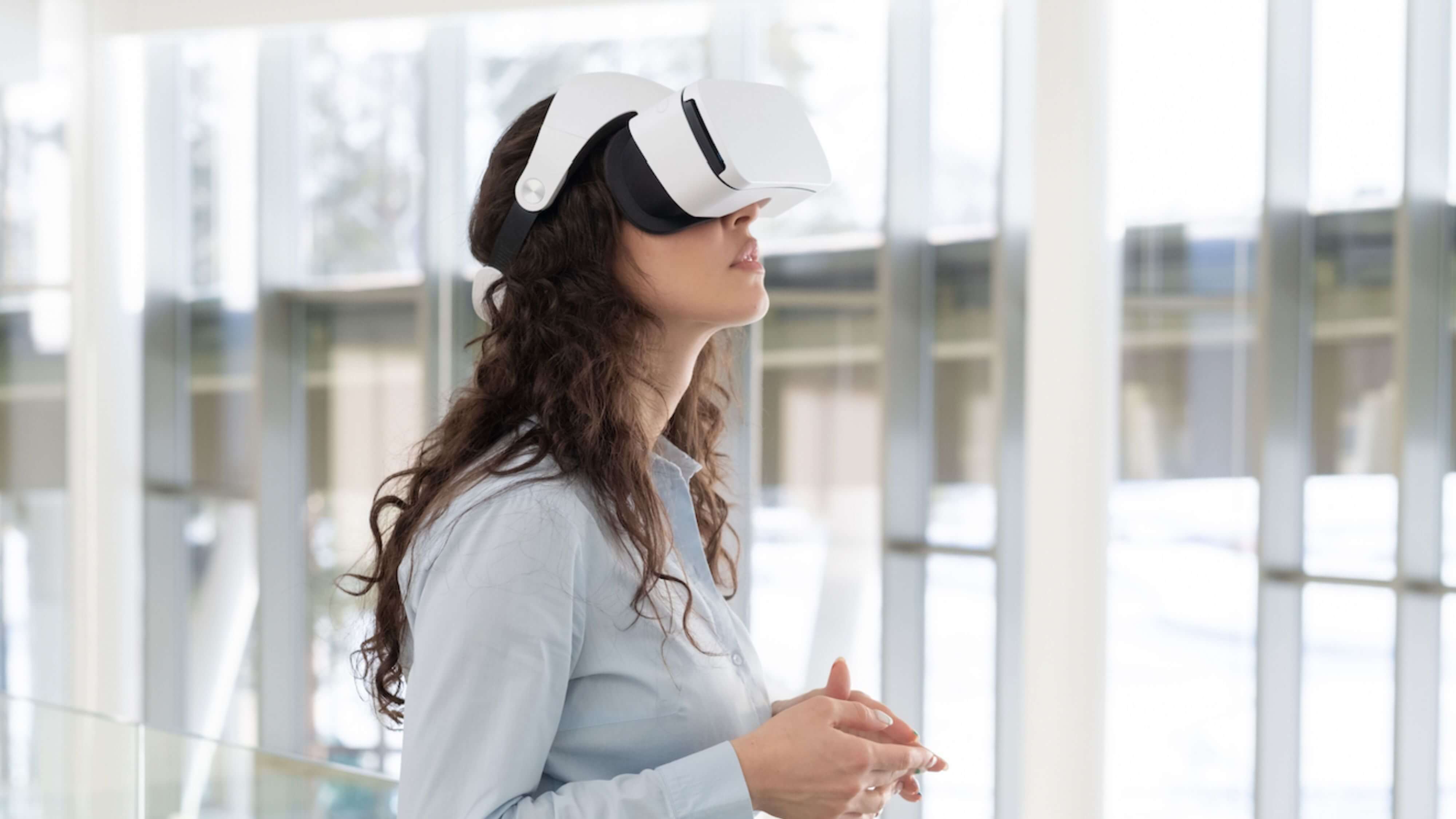Here's How the Metaverse Could Redefine the Workplace

VergeSense is the industry leader in providing enterprises with a true understanding of their occupancy and how their offices are actually being used.
The metaverse has been a prevalent conversation topic for enterprise organizations since its launch. As Facebook (Meta) and Microsoft publicize plans to work in these new “virtual spaces”, many are curious about what exactly they are, and how the metaverse will impact businesses and the workplace.
Here’s why businesses should invest in making plans for the metaverse workplace now, and how to start making your virtual work environment compatible with VR, AR, and smart glasses — before your competition does.
What is the Metaverse?
In essence, the metaverse is an online space where people and businesses can recreate virtual versions of themselves and interact as their avatar through a computer, a VR or AR headset, a game controller, or a phone. According to Wired.com, it’s part-video game, part e-commerce platform, part virtual reality. Its development is also still very much in progress — major companies like Facebook and Microsoft estimate that the metaverse won’t be operational for 5-10 years — so there’s a lot of speculation about how it will actually work.
While the metaverse is still in development, there are increasing bridges between the digital and physical world, and employees are already attending VR and AR conferences, using this technology during hybrid meetings, and creating virtual communities that exist completely online. Competitive organizations will adopt these technologies and embrace the shift to a more digitally connected, IoT-powered workplace that supports collaboration in new and innovative ways.
For a great primer on the current state of virtual reality and some educated guesses about what it could be like to experience the metaverse when it’s complete, watch this video of Wall Street Journal’s Joanna Stern living in the metaverse for 24 hours.
Here’s How the Metaverse Will Change the Workplace
1. The advent of AR and VR in the workplace
Metaverse working from home would look very different to what we know today, creating an entirely new segment of employee — those who prefer to work in the AR/VR office environment some or all of the time.
As shown in Meta’s video on working in the metaverse, to “go to work”, you simply go to your home desk, put on your headset and look around — holograms of branded decorations and other markers of an office space appear in your room.
Alternatively, it could work through a Virtual Reality headset with a screen that encloses your entire vision, no matter which way you turn. This would mean you can sit in a virtual room with coworkers, chat and catch up between meetings, or give a formal presentation and have it feel like everyone’s in a space together.
For this to be possible, workplace strategists and IT teams need to think about new hardware and software considerations, soundproof spaces or noise-canceling headphones for the office or home office, and access to integrations to support these new tools.
2. New workplace roles in the metaverse
The metaverse is going to need to be coded and maintained, and it’s likely that it could involve digital real estate transactions — people are thinking about buying virtual homes and spaces with real money.
It’s likely that as this technology evolves, major companies will start to scope roles that manage the purchasing of digital spaces, and roles that involve managing the employee experience within these digital spaces, like ensuring that the branding is consistent and seasonal decorations are updated, for example.
3. Hybrid work and employee attendance patterns will change
The advent of the metaverse could mean that commuting, and the need for physical office spaces, are drastically reduced. Maybe some employees will still choose to live close enough to a physical office to come in every once in a while, but if the experience of working from home is able to approximate some of the comforts and connection of working in an office, employees may choose to choose in-office days for collaboration.
The rise in interest in AR/VR-powered office spaces could change employee attendance patterns even more than they are already changing.
4. Employee experience in digital world
The possibilities for a digital employee experience are nearly endless. Companies can provide digital gift cards to let employees buy virtual decor for their virtual spaces. People operations teams can build company culture with virtual swag and clothing. Comedians or musicians can guest star in virtual social events for employees, or they can have group day trips to virtual versions of locations across the world.
Even today, in the infancy of this new realm of technology, technology is being applied in the workplace that links the digital with the physical. AI-powered sensors like VergeSense can help workplace planners figure out the actual occupancy of hybrid offices and help companies right-size their real estate portfolios.
Metaverse & Work FAQs
Can you work in the metaverse?
Not yet. But it’s likely that as virtual reality and augmented reality technology improves over the next 5-10 years, companies will start pursuing virtual office space and meeting places.
What do you do in the metaverse?
Currently, it’s a space to play video games, meditate, watch movies and concerts, and meet up and connect with other people’s avatars in “Alt Spaces”.
Why will the metaverse change the way you work?
The metaverse could reduce the need for commuting and real-life offices, so working from a room at home that can be enhanced with VR and AR technology could be the new frontier of work.
Learn more about digital twin technology and the metaverse.